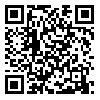BibTeX | RIS | EndNote | Medlars | ProCite | Reference Manager | RefWorks
Send citation to:
URL: http://psj.umsha.ac.ir/article-1-227-en.html

 , Mahboobeh Khorsandi *2
, Mahboobeh Khorsandi *2 
 , Mohsen Shamsi3
, Mohsen Shamsi3 
 , Mahdi Ranjbaran4
, Mahdi Ranjbaran4 
 , Naeemeh Nakhjavani5
, Naeemeh Nakhjavani5 

2- Departmant of Public Health, Faculty of Health, Arak University of Medical Sciences, Arak, Iran ,
3- Departmant of Public Health, Faculty of Health, Arak University of Medical Sciences, Arak, Iran
4- Instructor in Epidemiology, Faculty of health, Arak University of Medical Sciences, Arak, Iran
5- Assistant Professor of Pediatrics, Health Research Institute, Babol University of Medical Sciences, Babol, Iran
Introduction: Iron deficiency is the most common and widespread nutritional disorder in infants and children around the world. In developing countries, between 40 and 50 percent of children under 5 years of age suffer from this problem.The aim of this study was to predict iron deficiency anemia preventive behaviors of children by mothers of children 6-1 years covered rural centers of Babol City in 2015.
Methods: In this analytical-descriptive study, 267 mothers having children 6-1 years covered houses rural health centers in Babol City were selected by the multistage random sampling. Data were collected by the self-report method through a questionnaire including the demographic information, dimensions of the Health Belief Model (HBM) and performance. The data were analyzed by using test correlation, and regression.
Results: The mean age of the mothers were 29.85±55.5 years. Most mothers (49.1%) have education at high school level. Among models, perceived benefits and perceived barriers had the highest score (81.05) lowest score (45.75), respectively. In regression analysis for prediction behaviors, the variables: self-efficacy, perceived barriers and practice guide were detected as the predictor’s variables. These variables could predict totally 19% of behavior’ changes (P<0.001).
Conclusion: According to the findings in the design, educational interventions should be emphasized based on self-efficacy, perceived barriers and practice guides as the most important predictors of maternal behaviors.
Received: 2016/04/22 | Accepted: 2016/07/10 | Published: 2016/08/23
| Rights and permissions | |
 |
This work is licensed under a Creative Commons Attribution-NonCommercial 4.0 International License. |




